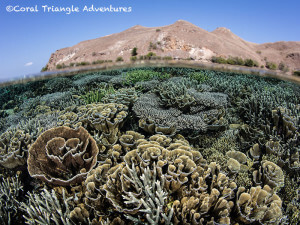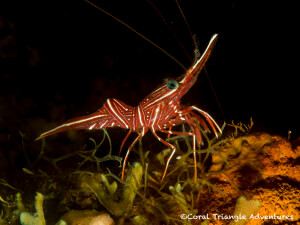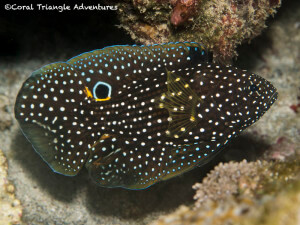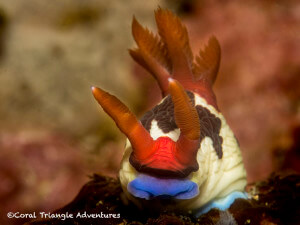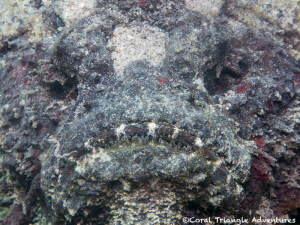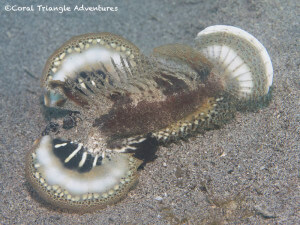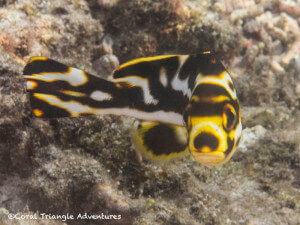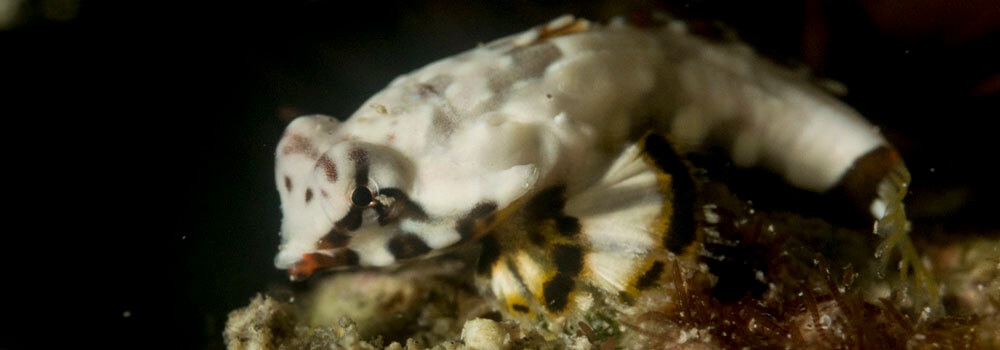
Komodo Snorkeling Tour Trip Report, Sept 12-23, 2015
Great weather, great guests, and great snorkeling! Is there anything more we could ask for during our third trip to Komodo National Park in three months?
 We began our journey in Bali and cruised east towards the park. Our first stop was at Angel Reef, a small islet composed of coral fragments that lies just a few kilometers off the west side of Moyo Island. This exposed reef has a magnificent hard coral garden and tons of big fish including snappers, unicornfishes, and groupers. It also has the largest assemblage of garden eels I have ever seen.
We began our journey in Bali and cruised east towards the park. Our first stop was at Angel Reef, a small islet composed of coral fragments that lies just a few kilometers off the west side of Moyo Island. This exposed reef has a magnificent hard coral garden and tons of big fish including snappers, unicornfishes, and groupers. It also has the largest assemblage of garden eels I have ever seen.
Our next stop was Satonda, the ancient volcano that now stands as one of the few examples of a salt-water caldera. It was suggested that salt water was introduced into the crater by a tsunami that forced seawater over the low saddle. It also might have some saltwater seepage that keeps the water saline. The reef out front has a dazzling array of fish and several cool habitats like sand, coral reef, and sea grass.
After an amazing snorkel on the lush reefs of Gili Banta, we entered Komodo National Park and spent the next five days exploring islands and sites such as Gili Lawadarat, Batu Monco, Pink Beach, and Siaba Kecil. All of these areas possess incredible reefs and we were treated to some of the best conditions we could ask for. Perfect low tides at Siaba Kecil allowed us to drift along the shallow reefs and even see much of the detail that is usually a bit elusive at higher tides. Gili Lawadarat delivered the sea horses again as well as a few bonus critters like Randall’s jawfish, a flying gurnard, and plenty of turtles that seemed all to willing to pose for us!
Two standouts for this departure were Horseshoe Bay on Rinca Island and Tatawa Besar in the northeastern section of the park. The reefs around the incredibly scenic Horseshoe Bay are some of the most colorful in all of Komodo National Park. Brilliant soft and hard corals crowd the shallows giving the impression that someone gathered paint samples of just about every color imaginable and threw them haphazardly onto the substrate. Tatawa Besar always treats and offer snorkelers the chance to see what reefs look like when there is 100% coral coverage.
As I write this, we are getting ready to do it all over again! We have another snorkeling trip planned with another group of excited snorkelers. Based on the three previous trips, I can confidently say this will easily be a snorkeling trip of a lifetime!

